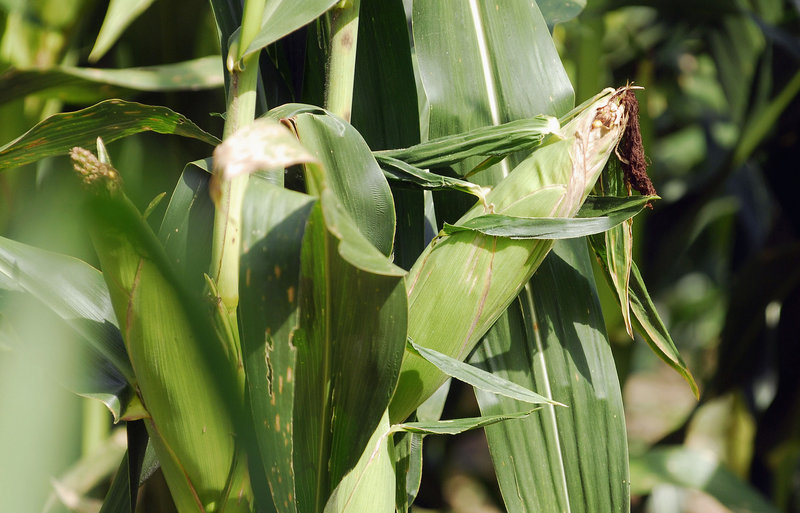CHICAGO – Corn, soybean and spring wheat harvests in the U.S., the world’s largest exporter, will be smaller than the government forecast last month after a damaging heat wave that may signal higher costs for food and biofuel.
The U.S. Department of Agriculture cut its corn-crop estimate by 4.1 percent, reduced the soybean forecast by 5.2 percent, and said spring wheat production will be 5.2 percent below what it predicted in July. The harvests for all three crops would be less than expected by analysts surveyed by Bloomberg.
Parts of the Midwest, the main growing region, were the hottest since 1955 last month. Smaller supplies of corn may increase costs for ethanol refiners such as Poet, Archer Daniels Midland Co. and Valero Energy Corp., and meat producers Tyson Foods and Smithfield Foods, which buy the grain for feed. The price of corn, the biggest U.S. crop, jumped 68 percent in the past year before Thursday.
“The heat last month really pushed the crop too fast, and that means yields may end up even lower,” Roy Huckabay, an executive vice president for the Linn Group in Chicago, said in a telephone interview before the report. “It’s going to be a tight supply, but the big unknown is demand, with the fear of a global slowdown.”
Corn production will total 12.914 billion bushels, compared with 13.47 billion projected in July, the USDA said Thursday in its first survey-based estimate for the crop. The average prediction of 31 analysts was for 13.079 billion. Last year’s crop was 12.447 billion bushels.
“Ears did not pollinate well in major parts of fields across the Midwest,” Iowa State University agronomists said this week in a report.
On Wednesday, corn futures for December delivery were unchanged at $6.885 a bushel on the Chicago Board of Trade. The price has surged in the past year on falling global reserves and rising feed, fuel and food demand. The U.S. is the world’s largest grower.
The soybean harvest will total 3.056 billion bushels, down from last month’s forecast of 3.225 billion, the USDA said. In 2010, production in the U.S., the world’s largest grower, was 3.329 billion.
“You didn’t have the acreage, and the crops in the southern U.S. were hurt by the heat,” Steve Nicholson, a commodity-procurement specialist at Fenton, Mo.-based International Food Products Corp., said before the report. “Supply is going to be tight and, historically, demand for food doesn’t slow down during periods of global economic turmoil.”
About 75 million acres were planted with soybeans this year, down from 75.208 million estimated in June, according to the USDA. Farmers reduced acreage from 77.404 million last year to plant more profitable corn.
Spring wheat production may total 522 million bushels, down from 550.7 million estimated in July, the USDA said. Last year’s harvest of spring wheat was 616 million bushels.
Send questions/comments to the editors.



Success. Please wait for the page to reload. If the page does not reload within 5 seconds, please refresh the page.
Enter your email and password to access comments.
Hi, to comment on stories you must . This profile is in addition to your subscription and website login.
Already have a commenting profile? .
Invalid username/password.
Please check your email to confirm and complete your registration.
Only subscribers are eligible to post comments. Please subscribe or login first for digital access. Here’s why.
Use the form below to reset your password. When you've submitted your account email, we will send an email with a reset code.